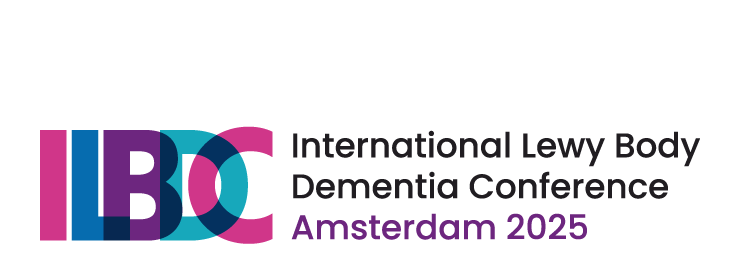Wednesday 29 January
Please note that this is the preliminary programme; times and titles are still subject to change.
08.30-08.35 | Opening Conference
Evelien Lemstra, chair ILBDC2025
08.40-09.10 | The International DLB Consortium reaches thirty
Opening lecture by Ian McKeith (Newcastle, UK), More information >
09.15-09.45 | Plenary I - Autonomic dysfunction in alpha-synucleinopathies
Alessandra Fanciulli (Innsbruck, Austria), More information>
Chairs: Ron Postuma (Montreal, Canada) & Wilma van de Berg (Amsterdam, NL)
09.45-10.15 | Plenary II - Pathogenesis of α-synuclein strains in disease
Amanda Woerman (Colorado, USA), More information >
Chairs: Ron Postuma (Montreal, Canada) & Wilma van de Berg (Amsterdam, NL)
10.15-10.45 | COFFEE BREAK
10.45-12.15 | SYMPOSIUM I - Prodromal Lewy body disease
Chairs: Rosie Watson (Melbourne, Australia) & Bradley Boeve
(Rochester, USA)
Oral presentations
- Cognitive and Neuroimaging Outcome of Prodromal Dementia with Lewy Bodies, Frédéric Blanc (Strassbourg, France)
- Clinical utility of skin biopsy for cutaneous phosphorylated alpha-synuclein in cognitive manifestations of Lewy body disease, Michael Rigby (Rochester, USA)
- Genome-wide association study of REM-sleep behaviour disorder identifies new risk locus, Emma Somerville (Montreal, Canada)
- The prodromal presentation of dementia with Lewy bodies: experience from an Australian longitudinal cohort study, Paula Loveland (Melbourne, Australia)
- Core clinical features and depressive symptoms have different impacts on cognitive decline in MCI-LB, Calum Hamilton (Newcastle, UK)
- Preliminary Longitudinal Data on the Prodromal Synucleinopathy Rating Scale Among Patients with REM Sleep Behavior Disorder in the North American Prodromal Synucleinopathy (NAPS) Consortium, Bradley Boeve (Rochester, USA)
12.15-13.30 | LUNCH/Poster session
13.30-15.00 | SYMPOSIUM II - Clinical features
Chairs: Rimona Weil (London, UK) & Carla Abdelnour (San Francisco, USA)
Oral presentations
- Autonomic and neurosensory disorders in dementia with Lewy bodies patients: characteristics, follow-up and neural basis, Morgane Linard
(Strassbourg, France)
- Circadian Rhythm disruption as a biomarker to differentiate between Dementia with Lewy Bodies and Alzheimer's Disease, João Durães (Coimbra, Portugal)
- Developing a digital delirium framework for continuous monitoring of rest-activity and sleep in inpatients with Parkinson’s disease and Parkinson’s disease dementia, Gemma Bate
(NewCastle, UK)
- Core Clinical Features Associated with Survival in Dementia with Lewy Bodies (DLB), Stuart McCarter
(Minnesota, USA)
- Comparison of clinical and neuropathologic features in probable dementia with Lewy bodies with cognitive symptom onset before and after age 65, Koji Kasanuki (Kanagawa, Japan)
-
Why do visual hallucinations happen in Lewy body dementia?, Rimona Weil (London, UK)
15.00-15.30 | COFFEE BREAK
15.30-17.00 | SYMPOSIUM III - Pathology in DLB
Chairs: Omar El-Agnaf (Doha, Qatar) & Tiago Outeiro (Gottingen, Germany)
Oral presentations
- GP2: enabling global genetics research, Huw Morris (London, United Kingdom)
- Modeling Lewy Body Disease with SNCA Triplication iPSC-Derived Cortical Organoids and Identifying Therapeutic Drugs, Na Zhao (Jacksonville, USA)
- Accumulation of Lewy-related pathology starts in middle age and may be more common than previously thought - lessons from neuropathological population studies, Liisa Myllykangas (Helsinki, Finland)
- Investigating the effect of mixed pathologies on neuropathological distribution in dementia with Lewy bodies, Lauren Walker (NewCastle, UK)
- Substantia nigra iron deposition in Lewy Body disease: an imaging and neuropathology study, Kejal Kantarci (Rochester, USA)
- Quantitative Analysis of Misfolded Alpha-Synuclein: A Biomarker for Synucleinopathies, Omar El-Agnaf (Doha, Qatar)
17.30-20.00 | Welcome reception
